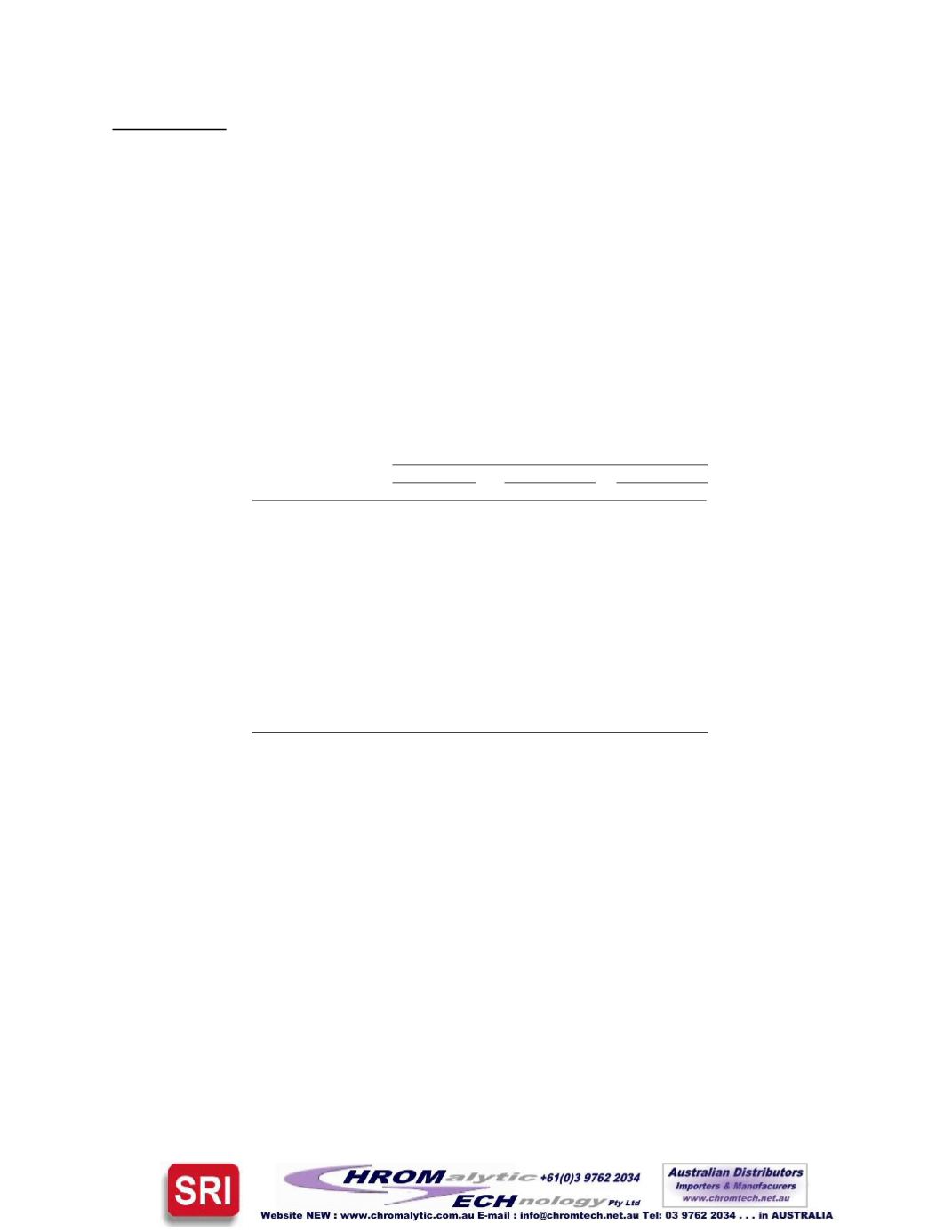
EXPERIMENTS
Three experiments were conducted: a) a quantitative assessment of explosives residues on a fragment removed from
a hand grenade that had not properly detonated (“low order”) and on quality assurance coupons (explosives-spiked
metal plates [Hewitt 2001]), b) a qualitative assessment of explosives residues on the fins of two 120-mmmortar
rounds after being fired, and c) an analysis of several soil sample extracts and soil sample splits. The colorimetric
screening stepwas only usedwith the soil samples since analyte concentrationswere either known or were expected
to be lowon the othermaterials.
Two of four metal coupons (1.5- × 1.5-cm rusted steel plate) spiked with approximately 1 mg of TNT, RDX, and
HMX (Hewitt 2001) and a 2.8-cm
2
fragment of a hand grenade casing were each wiped with an acetone-moistened
cotton swab. The remaining two coupons, two wiped coupons, the hand grenade fragment, and the three air-dried
cotton swabs were then submersed in acetone. Table 2 compares the GC-TID andMethod 8330 concentration esti-
mates obtained for the acetone extracts of these samples.
Table 2. ComparisonbetweenGC-TID andMethod 8330 for ex-
tracts of samplewipes and solvent immersion samples.
Solvent extract (mg/L)
TNT
RDX
HMX
TID* HPLC** TID
HPLC
TID
HPLC
Hand grenade fragment
Cotton swab
600
630
610
690
88
120
Swiped fragment
190
200
250
310
23
34
Coupons
Unswiped coupon
850
940
760
920
890
910
Unswiped coupon
890
950
860
930
1000
920
Cotton swab
780
820
620
730
690
720
Swiped coupon
79
78
180
150
140
140
Cotton swab
800
820
700
790
710
710
Swiped coupon
50
51
51
58
60
54
*GC-TID
**Method 8330
Two mortar fins that had been recovered from impact craters following proper detonation were each wiped several
times with acetonemoistened cotton balls. In each case an area of approximately 16 cm
2
was wiped at various loca-
tions (inside and outside of the stem, between one set of tail fins, and inside the bottom of the stem) on each of the
two fins. After air-drying, each swab was placed in the barrel of a 5-mL plastic syringe, a filter was attached, and 1
mL of acetone was placed on the swab. The plunger was then inserted and the swab was depressed to release the
solvent. Table 3 compares the GC-TID andMethod 8095 concentration estimates obtained for NG, the only explo-
sive detected, in the acetone extracts.
Fourteen soil sample extracts were screened using the visual colorimetric method described above, then diluted as
needed to achieve analyte concentrations below 50 mg/L prior to GC-TID analysis. Six of the samples were taken
from archived soil stored at the Cold Regions Research and Engineering Laboratory, and the remainder were sam-
ples (sample splits) that had been used as part of theU.S. Environmental ProtectionAgency’s Environmental Tech-
nologyVerification (ETV) Program (
. All of these samples were handled so that the colorimetric
screening and subsequent GC-TID analysis were blind (sample identity was masked). Table 4 shows the dilutions
made based on the colorimetric screening and a comparison betweenGC-TID andMethod 8330 concentration esti-
mates.


